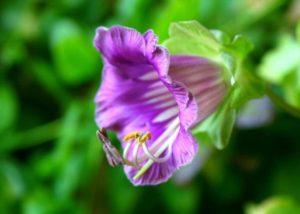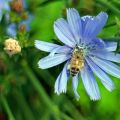Growing dimorphoteka from seeds, planting and care in the open field
Dimorphoteka, or Cape marigold, is grown as an annual plant in the middle lane. Every spring, gardeners sow seeds of culture for seedlings and only then transfer the matured seedlings to flower beds. There are no particular difficulties in growing dimorphoteka from seeds - the main thing is to properly prepare containers, soil and planting material and then regularly look after the seedlings. Beautiful chamomile marigolds will be a highlight in decorating the design of the site throughout the summer.
General description and characteristics of dimorphoteka
An ornamental plant belongs to the Astrov family, it is grown both as an annual and as a perennial - it all depends on the region. Domestic gardeners are forced to grow seedlings every year, since the heat-loving dimorphote in the open field will not survive cold winters. In height, the culture stretches to a maximum of 60 cm, and the color of the dimorphoteca baskets is amazing - there are varieties with lilac, pink, blue, yellow, apricot petals. The diameter of the basket itself does not exceed 10 cm.
Types and varieties
Before starting to grow an ornamental plant, they are determined with the type and variety, paying attention to its strengths and weaknesses. Most often, gardeners prefer these varieties:
- Notched. It grows up to 30-40 cm, characterized by stems that branch from the very base. The foliage of the plant is fragile, has a notched shape, for which the dimorphoteca of this species actually got its name. About 30 inflorescences, up to 7 cm in diameter, are formed on each stem. Their petals are yellow-orange in color. Abundant flowering is observed only in sunny weather.
- Rainy. On average, it stretches to a height of 17-20 cm. The stems are slightly elongated, like the leaves, which have weak pubescence. Inside the flower, the petals have a pale purple hue, at the edges they are white.
- Tetra Polyarstern. The diameter of large snow-white flowers of this variety reaches a maximum of 8 cm. The height of the Tetra Polarstern dimorphote does not exceed 40 cm, it is often used by gardeners for growing on the balcony. The peculiarity of the variety is that on cloudy days and at night, flowers close their petals.
- Tetra Goliath. It belongs to annual representatives, characterized by large flowers with a golden-orange hue. Their diameter reaches 10 cm. Peduncles of the Tetra Goliath variety are long, covered with numerous inflorescences, which makes the bush look voluminous.
- Giant Mixed.One of the most original varieties, because on one bush, baskets of orange, white and pink shades bloom at the same time. The height of the Giant Mixed is around 30 cm.
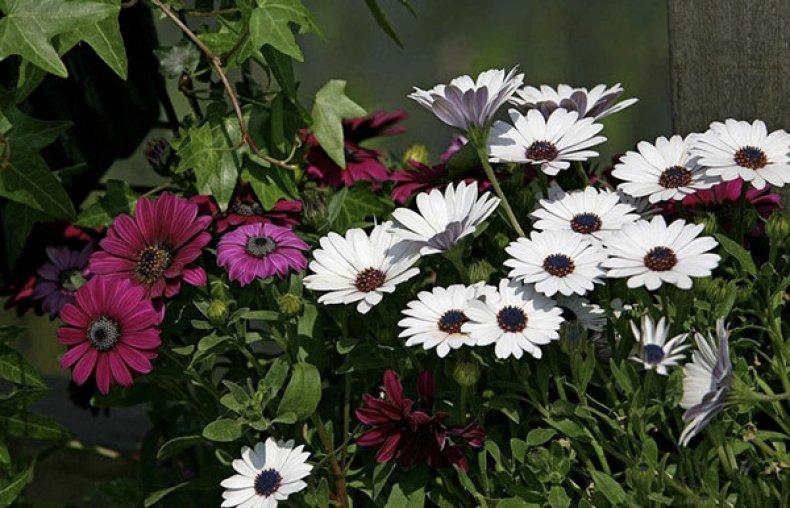
Growing seedlings from seeds
Experienced gardeners prefer to grow dimorphoteka from seeds at home, and then transfer the finished seedlings to a plot in open ground. There is nothing difficult in obtaining seedlings of a decorative flower.
Soil and capacity
To begin with, prepare the soil and containers in which the material is sown. Soil for growing seedlings of dimorphotek is purchased in a specialized gardening store. It should be nutritious, with a medium acidity. However, some growers prepare the soil on their own at home. To do this, adhere to the following proportions:
- three parts of humus;
- one piece of leafy land;
- one piece of turf land;
- two parts of coarse river sand.
Pots with drainage holes or peat tablets are ideal as seed containers.
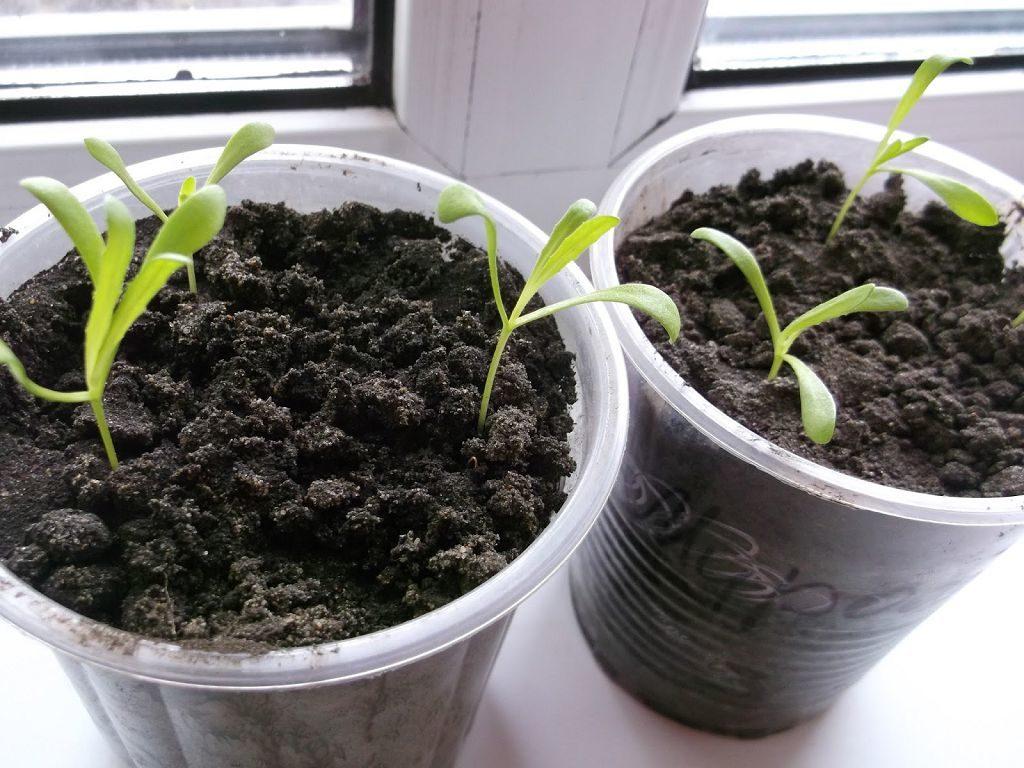
Landing technology
The prepared soil is laid out in containers, slightly moistened from above with a spray bottle. Dimorphote seed material is laid out on the surface of the soil and sprinkled on top with a thin layer of soil. If the seeds are planted in peat pots, no more than three pieces are placed in one.
The plantings are covered with glass or transparent plastic wrap and transferred to a room where the temperature is maintained at 16-20 degrees Celsius. Periodically, crops are opened for ventilation and moisture as the soil dries up.
Seedling care
The first sprouts of dimorphoteka appear above the ground surface after 10 days. After that, the cover that imitates the greenhouse is removed. As soon as the first true leaves are formed, the seedlings dive into separate containers. This is due to the fact that the dimorphoteca has a weak root system that needs free space for full development.
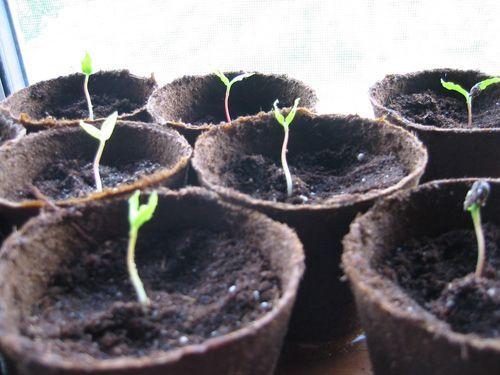
Disembarkation
Transplantation to open ground beds is carried out in the last days of May, when there is confidence in the absence of recurrent frosts. A well-lit and open place with high-quality drainage is selected for Cape marigolds.
The following algorithm is adhered to:
- The soil is dug up in autumn, complex fertilizers are applied and weeds are removed.
- Before planting seedlings, the soil is shallowly loosened again.
- When planting, they adhere to a distance between the bushes of 15-20 cm, while always preserving the earthen lump on the roots as much as possible so that they are not damaged. If the seedlings were grown in peat containers, they are lowered into the soil with them.
- After planting, young seedlings are watered, but not too abundantly.
You can sow dimorphoteka seeds directly into open ground, do it in early May. However, it must be remembered that such plants will bloom a month later than those grown from seedlings.

Crop care rules
In order to enjoy the lush flowering of Cape marigolds throughout the summer, it is necessary to properly care for the ornamental plant and carry out preventive treatments against diseases and pests.
Watering
Due to the fact that Dimorphoteka is a native of Africa, it tolerates dry and hot conditions without any problems, so there is no need for frequent moisture. They wait until the soil becomes dry to a depth of 4 centimeters and only after that they begin to irrigate the plants. If you moisten the dimorphotek too often and abundantly, this will lead to the defeat of the bushes with gray rot and the further death of ornamental plants.
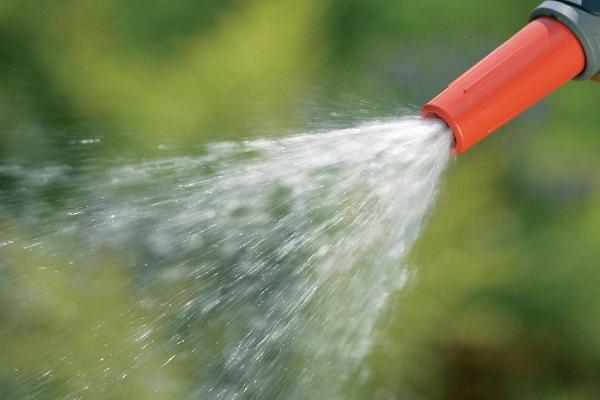
Fertilization
For abundant flowering, it is important to correctly carry out the plant feeding procedure.In the nutritional composition, the predominant components should be phosphorus and potassium. Fertilizers are applied for the first time a week after planting seedlings in open ground. Then they adhere to the scheme 1-2 times a month. Dimorphote especially needs feeding at the time of bud formation. Fertilization is stopped in early autumn.
Bloom
As soon as the baskets of the dimorphoteka begin to fade, they are immediately removed from the bushes. If you follow this rule, the plant will bloom until the first cold snaps.
Preparing for the winter period
Since in our climate, Cape marigolds are grown only as an annual plant, a new portion of seeds is sown for seedlings every spring. In open ground, even with good shelter, the plants will not survive the winter. Some gardeners dig up rare varieties of dimorphoteka for wintering in a pot at home, but this procedure does not always bring a positive result due to the weak root system of the culture.

Protection from pests and diseases
The most dangerous disease for Cape marigolds is considered to be gray rot, which develops in conditions of high humidity and the absence of a drainage system. To avoid this problem, moderately moisturize the plants, and when the first signs of damage appear, use Bordeaux liquid or any copper-containing preparation.
Reproduction
Cape marigolds are bred by the seed method, sowing them annually in the spring for seedlings at home and directly in open ground.
Dimorfoteka in landscape design
In sunny areas, Cape marigolds will be an ideal element of rockeries, and flower growers also use dimorphic for growing in boxes on balconies. Pelargonium, ageratum or petunias are selected as companions for them. But even in mono-plantings, dimorphoteka looks self-sufficient.

